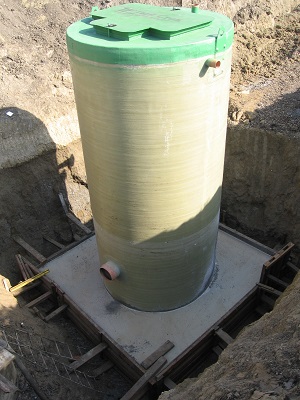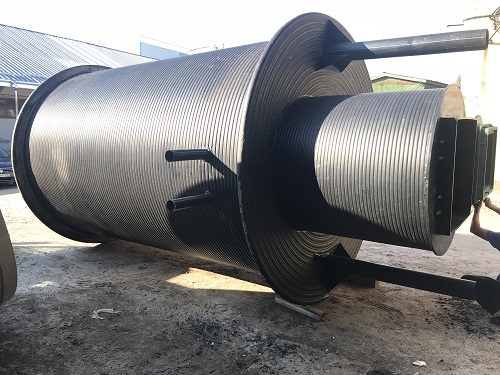Sewage pumping station (hereinafter SPS) is installed in places where there is a need for forced drainage of wastewater or rain/melt water.
Depending on the degree of pollution and the volume of wastewater there are two types of SPS, namely: in the mine version and in the dry version.
If it is necessary to provide water pumping in small volumes, for example, in private houses or on small productions, the first variant – in mine execution will be ideally suited. Arrangement of SPS in mine execution is simple enough. Today, many companies offer ready-made designs for sale.
Aquapolymer Engineering company offers SPS of a complete assembly set with all necessary equipment and carries out installation of SPS in the shortest possible time. A significant advantage of this design is the ease of installation, as it does not require any preparatory work.
KNS consists of the following components:
- tank (receiving chamber);
- pump (at large volumes there is a possibility of installation of several units)
- level sensor.
Tanks are mainly made of:
- fiberglass;
- polyethylene
Each of these materials has its advantages and disadvantages.
Fiberglass
The basis of the material is fiberglass. This material withstands soil pressure well and provides reliable waterproofing. The rigidity of the product is achieved by being part of the glass. However, when working with such a material, it is necessary to strictly follow all the rules provided by the operating instructions for such a product. It is important that only highly qualified specialists install the structure, as even a minor installation error can damage the equipment.
Another positive property of fiberglass is resistance to temperature fluctuations (from -50° C up to +110° C).
The main advantages of fiberglass are:
- not prone to corrosion;
- does not rot;
- is not afraid of aggressive liquids, etc.;
However, fiberglass has a number of disadvantages, namely:
- Fiberglass is afraid of bumps and cuts (if moisture gets into the crack, it can lead to delamination of the material).
- It is better to install SPS, made of fiberglass, on a concrete plate. The manufacture of concrete structures significantly increases the cost of construction and requires additional time.
- fiberglass is not subject to any type of welding, which greatly complicates its repair in case of breakage.
- when installing a fiberglass tank there is a need for additional waterproofing at the entrance of the pipes, which can adversely affect the tightness of the structure as a whole.
Polyethylene
The main advantage of polyethylene is its excellent weldability. This guarantees the homogeneity of the material.
Other advantages of SPS made of polyethylene are:
- excellent tightness of the tank (extrusion welding is used in the process of manufacturing the pumping station, thanks to this the structure is integral, and does not require additional waterproofing);
- simplicity and speed of product manufacturing;
- maintainability at any stage of production, installation and operation;
- ease of installation of the finished structure.
Polyethylene has a number of advantages in comparison with other materials, namely:
- dielectric properties;
- strength;
- not prone to corrosion;
- elasticity;
- low vapor and gas permeability;
- easily recyclable.
Based on statistics and research data, it can be argued that polyethylene can last more than 50 years without chemical and mechanical changes.
Therefore, we can safely conclude that it is better to use polyethylene for the construction of SPS! Such a product will be able to last more than a decade without damage.
Therefore, we can safely conclude that it is better to use polyethylene for the construction of SPS! Such a product will be able to last more than a decade without damage.
Manufacture and installation of a sewage pumping station made of polyethylene is a specific activity of Aquapolymer Engineering. We offer our customers only quality equipment. You can learn more about the services and products we sell by calling the numbers listed on our website.


